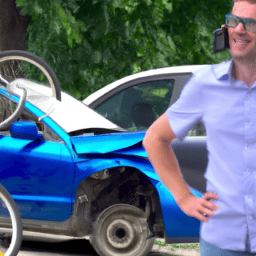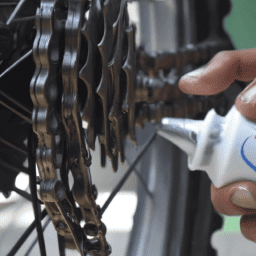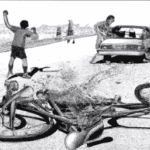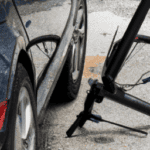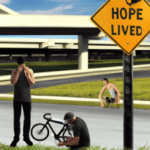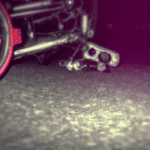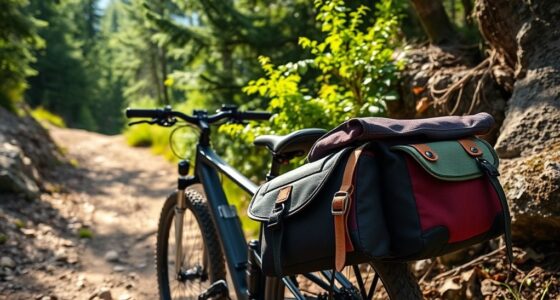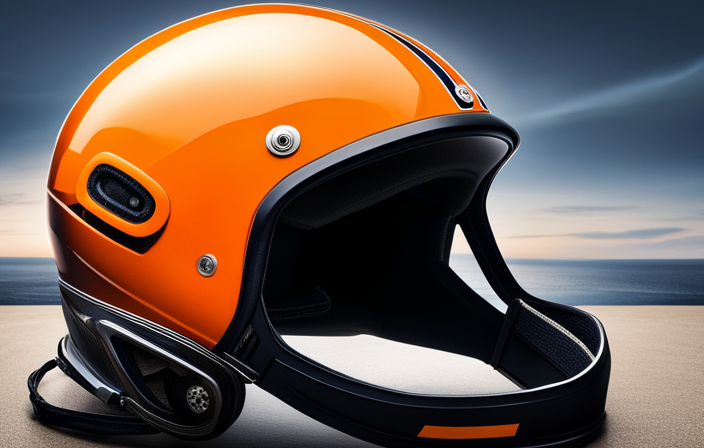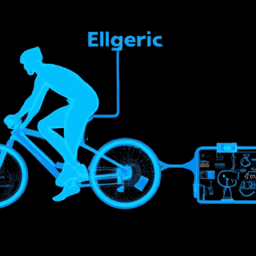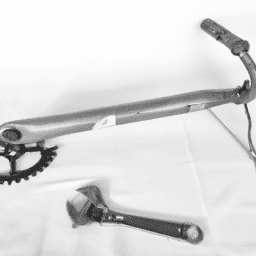I understand your perspective. ‘Why should I bother learning about replacing my bike following a car collision? I plan to be cautious and steer clear of accidents in the first place.’
While that’s a great mindset to have, accidents can happen to even the most cautious cyclists. It’s always best to be prepared and know the steps to take in case the worst does happen.
Assessing the damage to your bike and exchanging information with the driver are just the first steps in the process of getting your bicycle replaced after an auto accident. It can be a complex and overwhelming process, but with the right knowledge and approach, you can ensure that you are fully compensated for your loss.
In this article, I will guide you through the steps you need to take to get your bike replaced and give you some tips on how to make the process as smooth as possible. So, let’s dive in and get you back on the road!
Key Takeaways
- Assess the damage to your bike and find repair shops that specialize in bikes to get a clear idea of the damage and costs associated with repairs or replacement.
- Take detailed notes and pictures of the scene, damages to your bike, any injuries sustained, and get contact information from witnesses.
- File a claim with the driver’s insurance company, provide evidence of damages, and negotiate for fair compensation with effective communication and documentation tips.
- Consider checking homeowner’s or renter’s insurance policy or bicycle-specific insurance policies for comprehensive coverage, and seek legal assistance if needed to navigate the complex process of filing a claim and negotiating with insurance companies.
Assess the Damage to Your Bike
Before you can start the process of getting your bike replaced, you need to assess the damage and see if it’s worth repairing or if it needs to be completely replaced. Assessing the costs of repairs can give you a good idea of whether replacing your bike is the best course of action. If the repairs will cost more than the bike is worth, then it’s likely that you’ll need to replace it.
Finding repair shops that specialize in bikes can be a good place to start when assessing the damage. They can give you an estimate of the cost and let you know what needs to be replaced or repaired. If the damage is severe enough, they may also suggest that you replace the bike entirely.
Once you have a clear idea of the damage and the costs associated with repairs or replacement, you can move on to the next step of exchanging information with the driver involved in the accident.
Exchange Information with the Driver
As soon as you’ve got the driver’s info, you’ll be as prepared as a soldier with their gear. It’s important to exchange information with the driver involved in the accident, including their name, phone number, email, and insurance information.
However, dealing with uncooperative drivers can be challenging, and it’s essential to remain calm and polite during the exchange. To ensure that you have adequate documentation of the accident, take detailed notes and pictures of the scene, including the damages to your bike and any injuries you may have sustained.
Additionally, if there were any witnesses to the accident, be sure to get their contact information. Having this information will help you make a strong case when filing a claim with the driver’s insurance company.
With all the necessary information in hand, it’s time to file a claim with the driver’s insurance company. By following the proper procedures and providing the necessary documentation, you increase your chances of having your bicycle replaced after an auto accident.
File a Claim with the Driver’s Insurance Company
When filing a claim with the driver’s insurance company, I must provide evidence of damages to my bicycle and any personal injuries sustained in the auto accident. This may include photos, medical bills, and repair estimates.
I’ll also need to negotiate with the insurance company for fair compensation, which may involve hiring a lawyer if the initial offer is insufficient.
It’s important to be detail-oriented and professional throughout the process to ensure the best outcome.
Provide Evidence of Damages
You’ll need to provide evidence of the damages to your bicycle to ensure it gets replaced after the auto accident. This evidence will help the insurance adjuster determine how much the replacement will cost. Documenting evidence is crucial in getting the compensation you deserve. It’s important to take photos of the damage to your bicycle from different angles, including close-ups of any scratches, dents, or broken parts. You should also keep any receipts of repairs you made to your bicycle after the accident.
Providing evidence of the damages to your bicycle is only one step in the process of getting it replaced. After the insurance adjuster assesses the damages and the insurance policy coverage, you’ll need to negotiate for fair compensation. This can be a complex and time-consuming process, so it’s important to be patient and persistent.
Negotiate for Fair Compensation
To ensure you receive the compensation you deserve, it’s essential to negotiate for a fair settlement with the insurance adjuster. Effective communication is key during this process. Be calm, polite, and organized when presenting your case.
Explain your situation clearly and concisely, and don’t be afraid to ask questions or provide additional information if needed. Documentation tips are also crucial when negotiating for fair compensation. Keep detailed records of all expenses related to the accident, including medical bills, bike repairs or replacement costs, and lost wages.
Take photos of the damage to your bike and any injuries you sustained. Provide copies of police reports and witness statements, if available. By presenting a thorough and well-documented case, you increase your chances of receiving a fair settlement.
With these negotiation tips in mind, it’s important to also consider your insurance coverage as you move forward.
Consider Your Insurance Coverage
When it comes to insurance coverage for my bicycle, I know it’s important to consider all my options.
First, I’ll check my homeowner’s or renter’s insurance policy to see if my bicycle is covered under personal property.
If not, I’ll look into bicycle-specific insurance policies, which can provide additional coverage for theft or damage.
It’s important to be thorough and informed when making decisions about insurance coverage for valuable assets like my bicycle.
Check Your Homeowner’s or Renter’s Insurance
If you’ve got homeowner’s or renter’s insurance, you might be covered for a replacement bike after a car accident. It’s essential to check your policy’s terms and conditions and see if it covers personal property damage, including bicycles.
Here’s what to consider when checking your policy:
- Your insurance policy may have a specific limit on how much it pays for a replacement bike, so check the coverage amount.
- Some insurance policies may require you to pay a deductible before the coverage kicks in.
- It’s crucial to document the damage to your bike and file a claim with your insurance company as soon as possible.
Checking your home insurance or renter’s insurance policy can be a viable option for replacing your bike after an auto accident. However, it’s important to remember that not all policies cover personal property damage. If your policy doesn’t cover bike damage, or you want additional coverage, you can look into bicycle-specific insurance policies.
Look into Bicycle-Specific Insurance Policies
Consider exploring specialized insurance options for your bike, as they could provide the ultimate protection against any unforeseen mishaps that might occur while you’re out and about on your wheels. Bicycle-specific insurance policies offer more comprehensive coverage than standard homeowner or renter’s insurance. Policy options include coverage for theft, damage, and liability, which can protect you financially if you’re involved in an accident with another person or vehicle.
When looking into bicycle-specific insurance policies, it’s essential to research coverage details carefully. Some policies may only cover theft or damage to your bike while it’s in your possession, while others may include coverage for accidents that occur while riding. Additionally, policies can have varying deductibles and limits, so it’s crucial to understand what your policy covers and how much it will pay out in the event of a claim. By considering these factors, you can choose the policy that best fits your needs and budget.
It’s crucial to have proper insurance coverage for your bike, but accidents can still happen. If you’re involved in an accident and need legal help to get compensation for your injuries or damages, seek legal help if needed.
Seek Legal Help if Needed
It’s important to seek legal assistance if you want to ensure that you receive fair compensation for your bicycle after an auto accident. Legal representation can help you navigate the complex process of filing a claim and negotiating with insurance companies.
They can also help you determine the cost implications of your case and ensure that you receive the maximum compensation possible. Hiring a lawyer can be intimidating, but it’s important to remember that they are there to help you.
They will work with you every step of the way, from gathering evidence to negotiating with insurance companies. With their expertise and guidance, you can rest assured that your case is in good hands and that you will receive the compensation you deserve.
So, don’t hesitate to seek legal help if you need it.
Frequently Asked Questions
Can I get a rental bike while mine is being repaired or replaced?
I’m happy to inform you that rental bike options are often available while your bicycle is being repaired or replaced. However, keep in mind that insurance coverage limits may affect the extent of your rental options.
How long does the insurance company have to respond to my claim?
The insurance claim process has a set timeline for response, typically within a few days to a week. If there is no response, seek legal assistance to ensure your claim is handled appropriately.
What should I do if the driver doesn’t have insurance or if it’s a hit-and-run accident?
If the driver doesn’t have insurance or it’s a hit-and-run, I would recommend seeking legal assistance and filing a lawsuit to recover damages. It’s important to act quickly and gather any evidence to support your case.
Will my insurance rates go up if I file a claim for my bike?
Filing a claim for my bike may impact my premium, though I have alternative coverage options. It’s best to consult my insurance provider for specifics on potential rate changes and coverage options.
Can I claim compensation for any injuries I sustained in the accident, in addition to getting my bike replaced?
I may be eligible for compensation if I sustained injuries in the auto accident. I recommend seeking legal help to determine your eligibility and to navigate the claims process.
Conclusion
Well, that was quite an experience. Getting into an auto accident isn’t fun, but it’s especially frustrating when your beloved bike is involved.
However, with a bit of patience and persistence, you can get your ride replaced and back on the road in no time.
First things first, assess the damage to your bike and exchange information with the driver.
From there, file a claim with the driver’s insurance company and consider your own insurance coverage. And if you need legal help, don’t hesitate to seek it out.
Remember the old saying, "where there’s a will, there’s a way."
With determination and a clear plan of action, you can get your bike replaced and get back to doing what you love – riding.
So take a deep breath, stay focused, and keep pushing forward. You’ll be back on two wheels before you know it.
